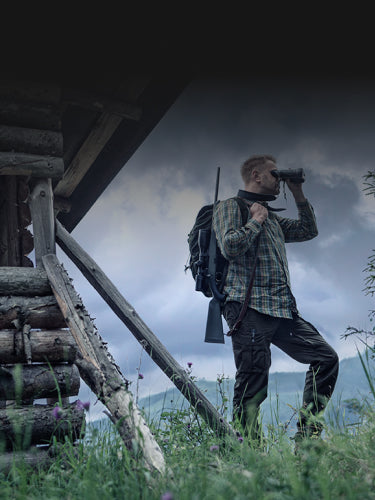Thermal technology is becoming increasingly affordable, so much so that even recreational small-game hunters can justify investing in a handheld monocular to assist in their pursuits. While debates continue, one area where thermal imaging clearly surpasses night vision is in post-hunt tracking and recovery. While game detection with digital night vision largely relies on movement, stationary game is inherently easier to spot with thermal imaging. Additionally, because these devices detect temperature differences, they can also identify tracks and other heat sources left by fleeing game.
Before I go any further, it’s important to acknowledge that not every reader may be familiar with the inner workings of thermal imaging technology. The good news is that I can keep the technical details to a minimum while explaining how thermal imaging is beneficial for tracking and recovery. Consider a laser thermometer: when you aim the beam at an object, it sends information back to the device. A simple processor then translates this information into something humans can understand—a temperature reading—and displays it for you. A thermal imaging monocular operates on a similar principle but with far more advanced technology. Instead of a single beam, it uses multiple sensors, and the information they gather is compared to create an image. This processed image is displayed inside the device, and when you look through it, you see the scene with warmer areas appearing more brightly than cooler ones.

This seemingly ordinary photo of the forest floor contains a hidden secret not immediately visible to the naked eye.

Anyone who’s experienced a successful hunt can confirm that a carcass remains warm for several hours after the animal expires. To a thermal imaging device, "warm" means just a few degrees above the ambient temperature. As a result, the animal’s body will remain visible on the display for hours in most conditions after it has been killed. Since most animals are naturally camouflaged to blend into their surroundings, using a handheld scanner like the Axion 2 can make locating downed game much easier, even if it has retreated into sparse brush. This advantage applies both during the day and at night, as thermal imaging does not rely on ambient light for effectiveness.
Warm-blooded animals are aptly named, as their blood is typically warmer than their environment—at least in most cases. This isn’t always true in southern states during the peak of summer, but that’s a relatively specific scenario that most hunters tend to avoid. That being said, blood will often stand out on a thermal device in most conditions. This makes thermal imaging an excellent tool for confirming a hit and avoiding the wasted effort of pursuing an animal that has escaped unscathed. A thermal monocular can illuminate a blood trail even in dense woods, as the blood will usually rest on the top layer of foliage. However, you’ll need to act quickly, as blood cools much faster than muscle tissue and will only be visible on your thermal screen for a limited time.
One of the most remarkable aspects of thermal tracking is that, under the right conditions, it can even detect footprints. This is most effective in the evening, after the ground has cooled, but it’s true—footsteps can remain visible for a short time. This can be incredibly useful when game slips over a hill and you need to decide which direction to focus your efforts. However, like blood trails, footprints fade quickly, so efficient tracking is essential.
As with any hunting tool, be sure to check your local regulations, as these can vary widely by state, species, and hunting season. If thermal imaging technology is permitted in your area, it can, in many ways, replace even a well-trained tracking dog. Keeping a monocular in your gear is an easy way to ensure successful game recovery, and their lightweight design makes them a negligible addition to your pack. With a little practice, spotting the signs of downed game and determining their direction of travel becomes second nature. Now all you need to do is make the shot!
If our products have helped you in any way, share your story with us! Accepted stories will receive a 20% discount code.




